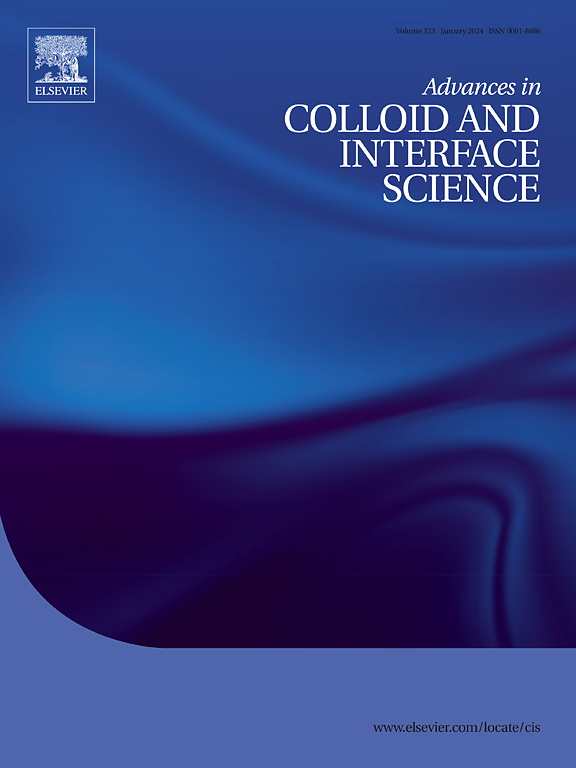Structural and functional roles of lactic acid bacteria in food delivery systems: A dual perspective of passive encapsulation and active carriers
IF 19.3
1区 化学
Q1 CHEMISTRY, PHYSICAL
引用次数: 0
Abstract
As the demand for functional foods and precision nutrition continues to rise, there is an urgent need for advanced delivery systems that improve the stability, bioavailability, and targeted release of sensitive bioactive compounds. Lactic acid bacteria (LAB), commonly found in fermented foods, have taken on a dual role—as both passive encapsulation targets and active delivery carriers—forming a conceptual basis for the development of next-generation food delivery systems. This review examines the interactions between LAB and various food-grade encapsulation materials including proteins (such as whey protein, casein, zein), polysaccharides (like alginate, chitosan), and lipids (such as liposomes, W/O/W emulsions), highlighting roles of electrostatic interactions, hydrogen bonding, hydrophobic interaction, covalent cross-linking, and interfacial self-assembly. Moreover, four emerging LAB-based delivery systems are classified: (i) surface adsorption via non-covalent interactions, (ii) intracellular loading driven by membrane transport or biosynthesis, (iii) co-encapsulation in hydrogels and emulsions, as well as (iv) engineered LAB capable of in situ synthesis and targeted release. The review also summarizes practical applications in hydrocolloid-rich food systems, such as yogurt, plant-based gels, and functional beverages. These applications highlight LAB's contribution to enhancing structural stability, controlled release, and nutritional functionality. Finally, key challenges are discussed, including the limited compatibility between encapsulating materials and food matrices, insufficient understanding of the interactions between exopolysaccharides and interfaces, and the need for in vivo validation. Based on these insights, future directions are proposed to guide the rational design of next-generation LAB-based delivery systems for precision nutrition and functional food innovation.

乳酸菌在食品配送系统中的结构和功能作用:被动封装和主动载体的双重视角
随着对功能性食品和精密营养的需求不断增加,迫切需要先进的递送系统来提高稳定性、生物利用度和敏感生物活性化合物的靶向释放。乳酸菌(LAB),常见于发酵食品中,作为被动封装目标和主动递送载体,具有双重作用,为下一代食品递送系统的发展奠定了概念基础。本文综述了乳清蛋白、酪蛋白、玉米蛋白等多种食品级包封材料与乳清蛋白、海藻酸盐、壳聚糖等多糖、脂质体等包封材料之间的相互作用,重点介绍了静电相互作用、氢键、疏水相互作用、共价交联和界面自组装等方面的作用。此外,四种新兴的基于实验室的递送系统被分类:(i)通过非共价相互作用的表面吸附,(ii)由膜运输或生物合成驱动的细胞内负载,(iii)在水凝胶和乳液中的共包封,以及(iv)能够原位合成和靶向释放的工程LAB。综述还总结了在富含水胶体的食品系统中的实际应用,如酸奶、植物性凝胶和功能饮料。这些应用突出了LAB在增强结构稳定性、控释和营养功能方面的贡献。最后,讨论了主要挑战,包括封装材料与食物基质之间的有限兼容性,对外多糖与界面之间相互作用的了解不足,以及体内验证的必要性。基于这些见解,提出了指导下一代基于实验室的精准营养和功能食品创新输送系统的合理设计的未来方向。
本文章由计算机程序翻译,如有差异,请以英文原文为准。
求助全文
约1分钟内获得全文
求助全文
来源期刊
CiteScore
28.50
自引率
2.60%
发文量
175
审稿时长
31 days
期刊介绍:
"Advances in Colloid and Interface Science" is an international journal that focuses on experimental and theoretical developments in interfacial and colloidal phenomena. The journal covers a wide range of disciplines including biology, chemistry, physics, and technology.
The journal accepts review articles on any topic within the scope of colloid and interface science. These articles should provide an in-depth analysis of the subject matter, offering a critical review of the current state of the field. The author's informed opinion on the topic should also be included. The manuscript should compare and contrast ideas found in the reviewed literature and address the limitations of these ideas.
Typically, the articles published in this journal are written by recognized experts in the field.

 求助内容:
求助内容: 应助结果提醒方式:
应助结果提醒方式:


